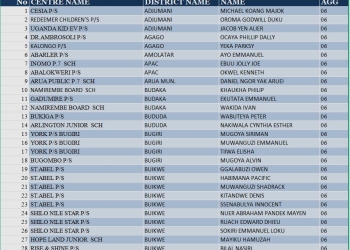 As the continent marks Africa Month in May, focus falls on the African narrative, and the need to tell our story from our own perspective. That story must be the product of African culture. But how does culture evolve?
As the continent marks Africa Month in May, focus falls on the African narrative, and the need to tell our story from our own perspective. That story must be the product of African culture. But how does culture evolve?
Much of what is accepted today as “part of our culture” began life as something fresh and new. Songs, customs, stories and works of art, were all created from a single human idea.
The lasting longevity of those creative works was achieved because they caught the imagination of the communities that they sprung from. People saw themselves reflected in those artworks, they resonated, and they went on to become timeless pieces of living African history.
From content to culture
That process is constantly happening. To provide an example from West Africa, the song Sweet Mother by Prince Nico Mbarga was once a simple pop song, like thousands of others.
The song was recorded with the band Rocalfi Jazz, and was rejected by several record labels before finally being released in 1976. Once it reached the airwaves, it captured the imagination of African listeners and went on to sell millions of copies. Some estimate that the song achieved sales of 13 million – more than any song by the Beatles. Officially, and unofficially, it became Africa’s most popular song.
In East Africa, a Swahili telenovela TV show titled Selina debuted in 2018. It went on to become the best-loved, longest-running daily TV show in Kenyan history, and remains a consistent favourite on platforms like Showmax.
Mozambican dance group W-Tofo started out performing at weddings. Then one of their kwaito-makwaela performances went viral, and they became wildly popular across the country. Next, they were spotted by pop icon Beyoncé. They starred in her Run The World video, which earned 698 million views, shifting the world’s taste in dance performance.
These compelling examples of African cultural creativity are constantly emerging. Music artists such as Burna Boy, DJ Maphorisa, Tems and Wizkid set global trends. African designs by the likes of Joy Meribe star on the catwalks of Europe.
Local pride
It all starts with local ideas, expressed locally, in African markets. Increasingly, African audiences are seeing the value of their own homegrown talent, and gravitating towards it.
The higher profile of African art – and artists – on the world scene is a direct result of growing African pride in its own cultural product.
The trend generates a kind of virtuous cycle. Growing love of local content makes that content more financially viable. This drives further investment in the marketing and the quality of the product – and in the wider industries that support it.
Another example of such African cultural momentum would be the long-running Africa Magic soap opera Tinsel. Since the show began airing in 2008, it has flighted more than 4 000 episodes.
Hailed as the most successful Nigerian drama series, the show tells the story of two rival film companies in a cutthroat battle for dominance in the world-famous Nollywood movie industry.
Authentic flavour
But the secret to the show’s success is its authentic, true-to-life flavour, believable characters and relevant storylines.
The show also ushered in a new era of high production standards, redefining how local television could look. This surge in quality, in turn encouraged other production houses to invest in better facilities and to hire better talent.
Local training institutions, such as the MultiChoice Talent Factory (MTF) Academies in Lagos, Lusaka and Nairobi, began producing hundreds of talented, aspiring, young filmmakers, hungry to help take the local industry to new heights.
In the television space, this cycle of quality local content driving industry growth has repeated itself in numerous territories.
Beside Tinsel in Nigeria and Selina in Kenya, other examples include Serategna Felegulen and Dinkinesh on Abol TV in Ethiopia; Peixe na Brasa and Date My Family on Mozambique’s Maningue Magic; Ramo and Hotel Palanca on Kwenda Magic in Angola, The Makeover and Jua Kali on Maisha Magic Bongo in Tanzania; Pearl Magic Prime’s Damalie and Senkyu Boss in Uganda; The Real Housewives of Nairobi and Single Kiasi on Maisha Magic Plus in Kenya; as well as Love Back Zambia and Milly Revealed on Zambezi Magic in Zamibia.
Television as culture driver
These – and dozens of other shows – have helped to drive an emerging African television industry. But most importantly, they show Africa as it is, in the eyes of its people. That kind of representation tells the African story from the African perspective.
The ultimate winners in the rise of local storytelling and contemporary cultural growth are the people of Africa – the audiences and the subscribers.
They see themselves reflected in the work they love, and the content they consume. For subscribers to pan-African services like MultiChoice Africa, viewing becomes a celebration of their heritage – but also an investment in the future growth of the African film and television industry.
Africa’s accelerating confidence in the excellence of its culture is empowering its next generation of storytellers. As the continent marks Africa Month in May, the story being told is increasingly one of pride, excellence and worldwide success.















